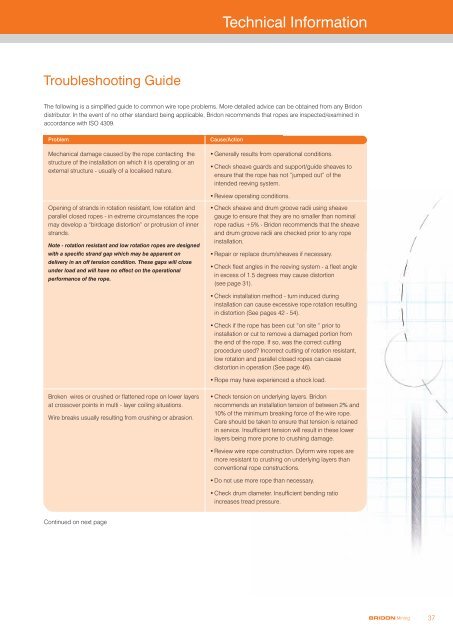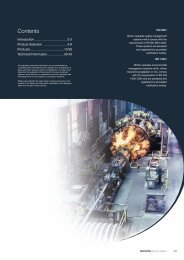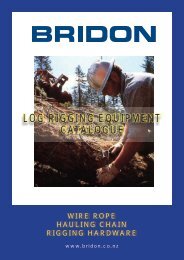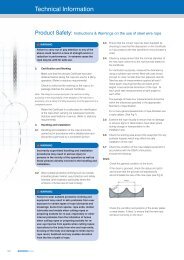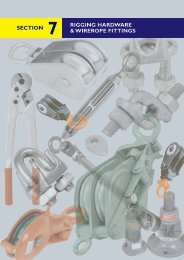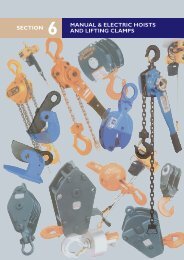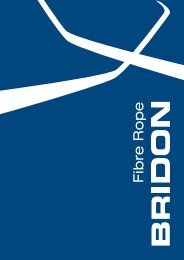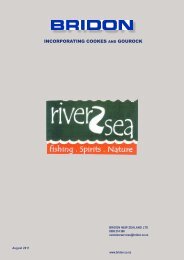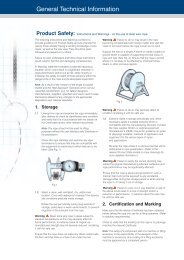You also want an ePaper? Increase the reach of your titles
YUMPU automatically turns print PDFs into web optimized ePapers that Google loves.
Technical InformationTroubleshooting GuideThe following is a simplified guide to common wire rope problems. More detailed advice can be obtained from any <strong>Bridon</strong>distributor. In the event of no other standard being applicable, <strong>Bridon</strong> recommends that ropes are inspected/examined inaccordance with ISO 4309.ProblemMechanical damage caused by the rope contacting thestructure of the installation on which it is operating or anexternal structure - usually of a localised nature.Cause/Action•Generally results from operational conditions.•Check sheave guards and support/guide sheaves toensure that the rope has not “jumped out” of theintended reeving system.•Review operating conditions.Opening of strands in rotation resistant, low rotation andparallel closed ropes - in extreme circumstances the ropemay develop a “birdcage distortion” or protrusion of innerstrands.Note - rotation resistant and low rotation ropes are designedwith a specific strand gap which may be apparent ondelivery in an off tension condition. These gaps will closeunder load and will have no effect on the operationalperformance of the rope.•Check sheave and drum groove radii using sheavegauge to ensure that they are no smaller than nominalrope radius +5% - <strong>Bridon</strong> recommends that the sheaveand drum groove radii are checked prior to any ropeinstallation.•Repair or replace drum/sheaves if necessary.•Check fleet angles in the reeving system - a fleet anglein excess of 1.5 degrees may cause distortion(see page 31).•Check installation method - turn induced duringinstallation can cause excessive rope rotation resultingin distortion (See pages 42 - 54).•Check if the rope has been cut “on site “ prior toinstallation or cut to remove a damaged portion fromthe end of the rope. If so, was the correct cuttingprocedure used? Incorrect cutting of rotation resistant,low rotation and parallel closed ropes can causedistortion in operation (See page 46).•Rope may have experienced a shock load.Broken wires or crushed or flattened rope on lower layersat crossover points in multi - layer coiling situations.Wire breaks usually resulting from crushing or abrasion.•Check tension on underlying layers. <strong>Bridon</strong>recommends an installation tension of between 2% and10% of the minimum breaking force of the wire rope.Care should be taken to ensure that tension is retainedin service. Insufficient tension will result in these lowerlayers being more prone to crushing damage.•Review wire rope construction. Dyform wire ropes aremore resistant to crushing on underlying layers thanconventional rope constructions.•Do not use more rope than necessary.•Check drum diameter. Insufficient bending ratioincreases tread pressure.Continued on next pageBRIDON <strong>Mining</strong>37


